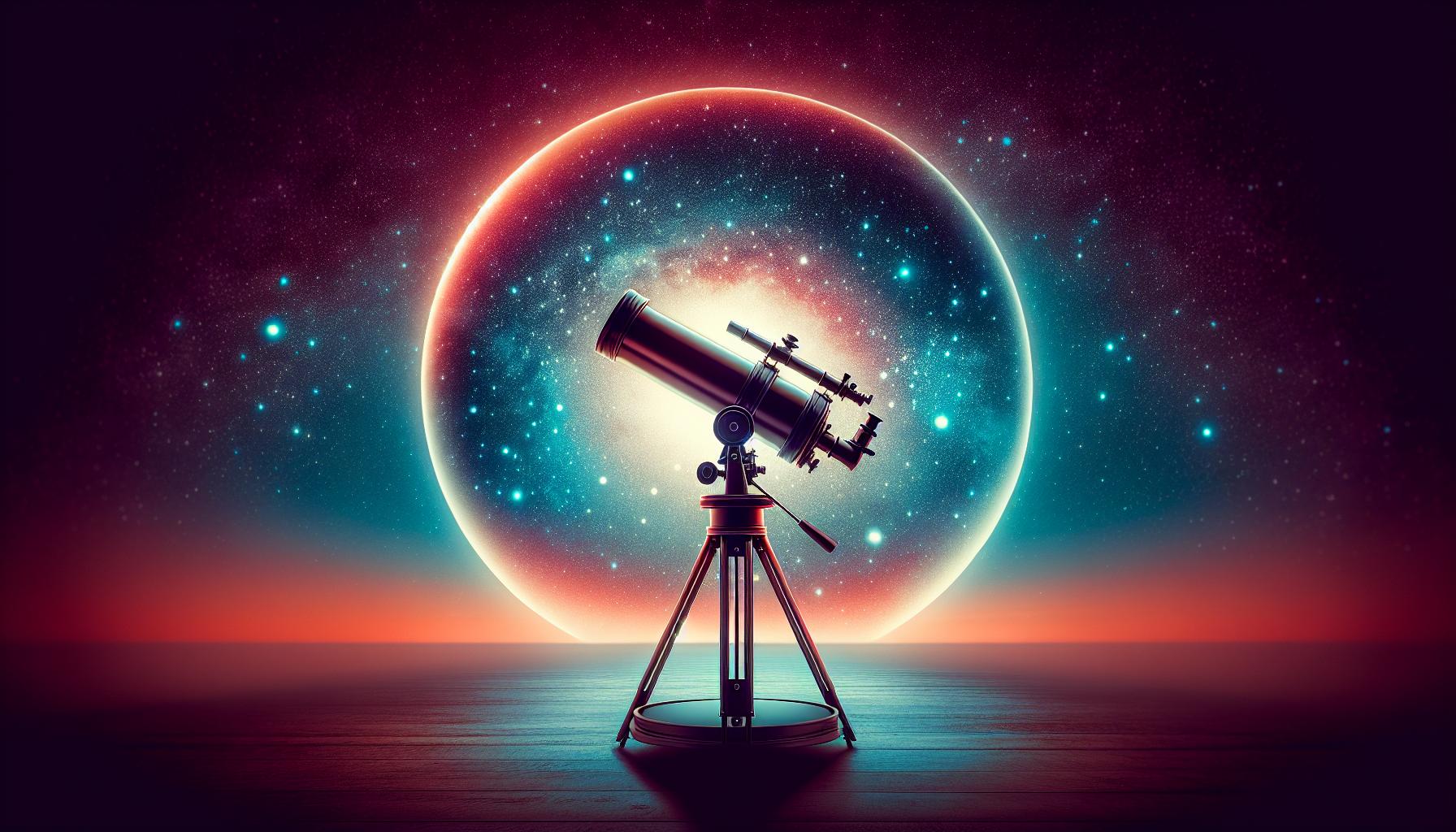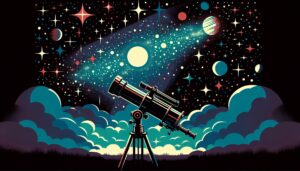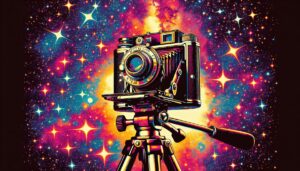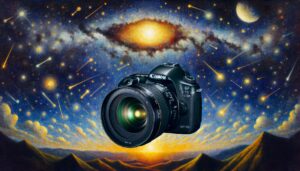This site contains affiliate links to products. I may receive a commission for purchases made through these links.
Refractor telescopes, with their superior optical clarity and absence of mirror-induced distortions, are perfect for capturing the intricate details of our universe. They employ lenses rather than mirrors, which do away with mirror-induced distortions. This feature is critically vital in astrophotography where the tiniest speck of dust or a teeny-weeny distortion can skew the output.
They are especially good at delivering high-contrast images. This, along with their ability to produce vibrant colors, elevates their desirability factor for me. And it’s not just about the deep-space and long-exposure photography. Refractors are equally great even for capturing bright and detailed lunar and planetary images. Isn’t that incredibly versatile?
Here’s a little secret from my stargazing years. Refractors are the best bet for beginners. And no, it’s not just because of their ease of use. The high-quality image produced by refractors helps a beginner “see” and understand the intricacies of astrophotography better.
Below, I am providing a comparison between refractor and other telescopes based on different parameters. Let’s take a look!
| Parameter | Refractor Telescope | Other Telescopes |
|---|---|---|
| Optical clarity | High | Variable |
| Distortions | Minimal | Can be significant |
| Image Contrast | High | Dependent on model |
| Ease of Use | High | Dependent on model |
| Suitability for beginners | Ideal | Dependent on model |
In the following sections, we’ll delve deeper into the nitty-gritty of choosing the best refractor telescope for astrophotography, discuss some top models you should consider, and provide useful tips and tricks to sharpen your astrophotography skills.
Factors to consider when choosing a refractor telescope
First and foremost, you should consider the aperture size. It’s the most critical component to look at when choosing a refractor telescope. Larger apertures let in more light, allowing you to see fainter objects and finer detail in the universe.
Next, the focal length and ratio come into play. A longer focal length provides a narrow field of view but gives higher magnification. The focal ratio typically dictates the telescope’s overall size and the sharpness of images it can display.
Consider the quality of the optics too. Opt for high-quality glass for the lens to ensure you get crisp, vibrant images of celestial bodies. Lesser quality glass can induce chromatic aberration, impacting your astrophotography efforts.
Of course, you can’t forget about the mount type. It’s an unsung hero in astrophotography. Equatorial mounts are more suitable for tracking objects, while alt-azimuth mounts are more straightforward but less suitable for long-exposure photography.
The portability of the telescope is equally vital if you plan on taking your telescope for stargazing sessions out in the wilderness. Compact, lightweight models are easier to transport but might sacrifice some optical capabilities.
Lastly, your budget will ultimately determine the telescope you can afford. It’s essential, however, not to compromise on the key features required for good astrophotography. Sometimes, it’s worth spending a bit extra for a higher-quality telescope.
Top 5 refractor telescopes for astrophotography
Astrophotography requires precision, so let’s get right down to the nitty-gritty. I’ve tested numerous telescopes, and after rigorous comparison, I’ve handpicked the top 5 refractor telescopes that’ll bring the cosmos to your backyard.
1. Celestron AstroMaster 70AZ Refractor Telescope
It’s an excellent entry-level refractor with plenty of features. The 70mm aperture gives clear, bright images while being portable and budget-friendly. A solid choice for beginners to explore the night sky and dip their toes in astrophotography.
2. Orion AstroView 120ST Equatorial Refractor Telescope
If you’re looking for something a little advanced, this could be your pick. The AstroView offers a wide field of view, making it perfect for capturing beautiful galaxy images. Its 120mm aperture and a focal ratio of f/5.0 ensure crisp, vibrant images.
3. Sky-Watcher ProED 120mm Doublet APO Refractor
Sky-Watcher ProED is a heavyweight contender in this list. What makes it stand apart is its apochromatic (APO) optics that dramatically reduce chromatic aberration, bringing superior precision and clarity to your astrophotographs.
4. Explore Scientific AR127 Air-Spaced Doublet
This is a tool for the dedicated astrophotographer. With its large 127mm aperture and precision focuser, the AR127 provides depth and detail to your astrophotography. The doublet lens arrangement adds to its visual prowess.
5. Meade Instruments Infinity 102mm AZ Refractor Telescope
The Meade Infinity strikes a great balance between power and portability. Its 102mm aperture provides bright and detailed images, while the altazimuth mount makes tracking objects a breeze.
Read also: Beginner’s Astrophotography Telescopes You Should Consider
Tips for beginner astrophotographers
Astrophotography as a hobby can be extremely rewarding, and using a refractor telescope makes it even more so. Yet, to excel in this field, you’ll need to embrace some best practices and tips.
Quality over Quantity. When first dipping your toes into astrophotography, it can be tempting to go for the telescope with the largest aperture or highest magnification. However, in astrophotography, quality trumps quantity every time. A smaller, high-quality refractor telescope can outperform a larger one with subpar optics. Most importantly, the optics should be pristine, ideally multi-coated to eliminate reflection and maximize light gathering.
Master the Mount. As mentioned before, a solid equatorial mount is paramount. This is not the area to cut corners. A stable, well-made mount is the foundation on which crisp, clear astrophotographs are built.
Begin at the Beginning. I’ve heard many beginners ask, “What’s the best celestial object to start with?” My answer is always the same: Start with the moon. It’s close, it’s bright, and it’s packed with astonishing detail. Perfecting your moon shots will give you invaluable practice adjusting your telescope and camera settings.
Understand the Role of Software. In astrophotography, your shots aren’t done once you’ve taken them. Post-processing software like Adobe Photoshop or GIMP can enhance your photos, bringing out the impressive detail and colours in celestial objects.
Learn, Practice, Repeat. Like any skill, astrophotography requires practice. Don’t get disheartened if your initial attempts don’t live up to your expectations. Keep trying, keep learning, and remember: Even the most accomplished astrophotographers were beginners once.
It’s important to note that patience is crucial in this field. You could be set up for hours only to have clouds block your view. But once you capture that perfect shot, you’ll realize it’s been worth it. Astounding and awe-inspiring views await in astrophotography, making all the preparation and patience worthwhile.
Conclusion
So there you have it. Picking the best refractor telescope for astrophotography isn’t as daunting as it might seem. It’s all about understanding the key factors like aperture size, focal length, optics quality, and the mount type. Remember, it’s not always about the most expensive or biggest telescope. It’s about the one that suits your needs and skills.
As a beginner, it’s essential to start simple – the moon makes a great first subject. And above all, patience is key. The perfect shot may take time, but trust me, it’s worth the wait. Happy stargazing!
Don’t forget to subscribe to our newsletter where you’ll find the latest cosmic discoveries, expert stargazing tips, and exclusive subscriber deals. Embark on your cosmic journey if you haven’t already!
FAQs
Why are refractor telescopes important in astrophotography?
Refractor telescopes are important in astrophotography as they provide clear, high-contrast, and detailed images that are essential for capturing celestial objects. They minimize chromatic aberration and provide sharp and color-correct images ideal for astrophotography.
What are the crucial factors to consider when choosing a refractor telescope?
The key factors in selecting a refractor telescope include aperture size, focal length and ratio, quality of optics, and the type of mount. These specifications highly influence the results of astrophotography and the overall stargazing experience.
Why is the mount type significant in astrophotography?
The mount type, especially a stable and solid one like the equatorial mount, is vital in astrophotography as it holds the telescope steady for long exposure shots and counteracts Earth’s rotation to track celestial objects more accurately.
What are some tips for beginner astrophotographers?
Beginners should prioritize quality over quantity, master their mount, start with photographing the moon, understand the use of software in post-processing, and constantly learn and practice. Patience is also necessary, as astrophotography is a rewarding but time-consuming endeavor.








